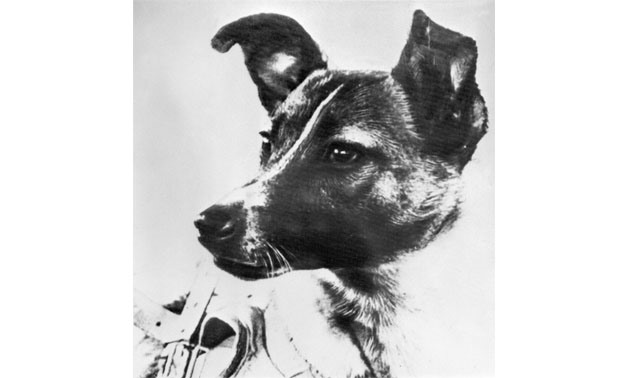
Laika, a former street dog, made history by blasting off in to space on a one-way journey as the first living creature to go into orbit
MOSCOW – 2 November 2017: "I asked her to forgive us and I even cried as I stroked her for the last time," says 90-year-old Russian biologist Adilya Kotovskaya, recalling the day she bid farewell to her charge Laika.
The former street dog was about to make history as the first living creature to orbit the earth, blasting off on a one-way journey.
The Soviet Union sent Laika up to space in a satellite on November 3, 1957 -- sixty years ago. It followed the first ever Sputnik satellite launch earlier that year.
But things did not go exactly to plan and the dog was only able to survive for a few hours, flying around the Earth nine times.
"Those nine orbits of Earth made Laika the world's first cosmonaut -- sacrificed for the sake of the success of future space missions," says Kotovskaya, who remains proud of her pioneering work as a scientist training Laika and other early space animals.
For Soviet leader Nikita Khrushchev, Laika's voyage was yet another space feat to discomfit the Americans.
In a well-timed propaganda effort, it fell just before the 40th anniversary of the Bolshevik Revolution on November 7.
Kotovskaya recalls that before Laika, several dogs had been blasted up into suborbital space for brief periods of a few minutes "to check that it was possible to survive in weightlessness."
"Now it was time to send one into space," says Kotovskaya, who turned 90 in October but still heads a laboratory at Moscow's Institute of Biomedical Problems.
To get dogs accustomed to the idea of space travel inside a pressurised capsule just 80 centimetres (31 inches) long, Kotovskaya gradually moved them into smaller and smaller cages.
The canine candidates spent time in a centrifuge, that simulates the gruelling G-forces created when a rocket blasts off, as well as being exposed to similar noise levels.
They even ate jellified space rations.
Laika was a mongrel dog aged around three who weighed six kilograms (13 pounds). Like all the other candidates for space, she was a female stray found on a Moscow street.
"We chose bitches because they don't have to raise a leg to urinate which means they need less space than the males," Kotovskaya said.
"And (we chose) strays because they are more resourceful and less demanding."
For publicity reasons, the dogs also had to be photogenic and they were given memorable names.
Laika's name derives from the Russian word for "bark". She was chosen out of five or six candidates for her resourceful yet docile nature and slightly quizzical expression.
- 'Overheating and exhaustion' -
Russian scientist Adilya Kotovskaya was charged with preparing Laika for her space mission
"Of course we knew she was destined to die on the flight, since there was no way to get her back -- this wasn't possible at the time," said Kotovskaya.
On the eve of Laika's mission, the scientist went in to say goodbye to the dog and give her a final caress, she said.
The Sputnik satellite carrying Laika blasted off on a rocket at 5.30 am Moscow time from Kazakhstan, where the Soviet Union would later base its Baikonur cosmodrome.
Initially "nothing seemed to be going wrong," Kotovskaya said.
"Of course, during blast-off, Laika's heart beat speeded up a lot."
But after three hours, her heart beat was back to normal.
Then suddenly during the ninth orbit of the Earth, the temperature inside the capsule began to soar and reached over 40 degrees celsius (104 degrees Fahrenheit), due to insufficient insulation from the Sun's rays.
The hope was that Laika would stay alive for eight to 10 days, but instead she died from overheating and dehydration after a few hours.
Soviet radio nevertheless kept broadcasting daily updates on her health, insisting all was well.
The official version was that she died after eating poison administered in her food to avoid a painful death on re-entry into the Earth's atmosphere. Moscow maintained this fiction for many years.
The satellite carrying her remains burnt up in the atmosphere five months later, on April 14, 1958, above the Antilles island group.
The first animals to go into space and return alive were a pair of dogs called Belka and Strelka who blasted off in a rocket on August 19, 1960 and returned a day later.
The success of their mission persuaded Soviet authorities to go ahead with the highly risky first space trip by a human, Yury Gagarin, in April 1961.


Comments
Leave a Comment